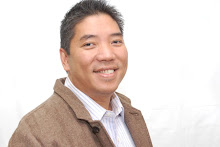By Ambeth Ocampo
Philippine Daily Inquirer
First Posted 00:44:00 09/24/2008
When Emilio Aguinaldo was in power, he carried many titles: “president” was one, “generalissimo” another, and “dictator” yet another. Because of our experience with Ferdinand Marcos and martial law, “dictator” is seen in a negative way, but during the Philippine Revolution and the Philippine-American War, the context was different.
It is unfortunate that Aguinaldo is just a name in our textbooks, a hero fossilized in monuments of bronze and marble. My mental image of Aguinaldo changed when I visited his home in Kawit, Cavite. There I saw both a hero and a man.
His house is an eccentric architectural marvel, complete with secret passages. Floors open to reveal a hidden staircase, a cabinet opens into a small passage way, the heavy-tone kitchen table covers a dark tunnel that reputedly leads to the town church.
While everyone is busy looking at the famous “Independence Balcony” where the Declaration of Independence was read on June 12, 1898, I try to find photographs of the house as it was in 1898. There was no balcony at the time, and the declaration was read from a window that has since become a balcony for photo opportunities.
The Kawit kitchen is quite interesting. There is an ice box built into a wall that doubles as a staircase to the servants’ quarters. The stove and oven even has an ornate cast-iron cover marked “E. Aguinaldo.”
Contemplating this kitchen made me wonder what kind of food Aguinaldo ate, what he liked, what he disliked. Jose Rizal recorded in his diary that one of his favorite foods was “sardinas secas,” literally translated into “dried sardines” but more popularly known as tuyo. One wonders if Aguinaldo’s cook kept a cookbook of the general’s favorite dishes and who came to dinner in Kawit. Getting to know what our heroes ate makes us know them better.
Aguinaldo’s memoirs do not carry detailed references to food but when his forces were moving northward from Malolos, Bulacan, to escape the enemy, they had to subsist on a very Spartan diet. From the diaries of his companions, Santiago Barcelona and Simeon Villa, we find out what they ate. One of the specialties was called “Banawe Breakfast”:
“The so-called Banaue Breakfast is enjoyed every morning by the President and [his] family during their stay in this ‘rancheria’ [barrio]. It is tasty light and digestible, cheap and easy to prepare. It has been preferred by all who have tasted it and by the President himself whenever he comes to these mountains. It consists of milk and coffee, fried ‘camote’ [sweet potato], and five to seven millimeters thick of butter. It was named thus by the President.”
Today we have “camote-cue” covered in caramelized sugar (I have yet to try fried camote with butter). It must be the local version of French fried potatoes, but can we have camote with coffee?
From the diary of Col. Simeon Villa, there is this entry on March 22, 1901: “Today is the President’s birthday. Many people come to greet him.”
On March 23, 1901, four years after he became President of the First Republic, Aguinaldo was a prisoner of the Americans having been captured by Fredrick Funston and his merry band of Macabebe mercenaries. Aguinaldo’s trek to Palanan, Isabela, gave them a taste of camote:
“There was an abundance of camote, but rice was so scarce that our meals had been reduced to twice a day: the first consisted of camote cooked at nine in the morning, and the second at three in the afternoon consisted of rice and meat. Our ration was one half ‘chupa’ [one-third of a liter] only, so we never felt satisfied. When meat was not available, and this was really scarce, we had camote tops and pepper leaves cooked in salt and water. Sometimes when rice was scarce, kamote took its place in our afternoon meal, so we had camote the whole day.”
They were so sick of it that they started to dream of better food and better places: “One moonlit night the President [and others] agreed that once the independence of the country was declared, we would travel leisurely through Europe and with a budget of one million pesos for expenses.”
This was obviously a remark made in jest, a remark made in the wilderness of Northern Luzon, and yet some people have taken it literally, thus painting Aguinaldo in the worst possible way.
I remembered these stray references to food when I visited Aguinaldo’s house hoping I would get to know the hero better. I looked at many old photographs and looked at the books in his library. I even contemplated the carabao backrest on his chair. There are many surprising relics in Kawit, like old uniforms and insignia, but the most odd are the pickled appendix of the general together with a dry piece of gauze in a separate bottle, the souvenirs of an appendectomy. These are kept in his medicine cabinet in the middle of many blue bottles of eye drops.
After the operation, Aguinaldo still complained of discomfort. The surgeons opened him up again, only to discover that one of the doctors forgot a towel inside!
I’ve asked some doctors if this was a case of medical malpractice. They replied that a towel was negligible. But what if they forgot a scalpel?
Such details not found in our textbooks. They may be trivial but they breathe life into our history.
* * *
Comments are welcome at aocampo@ateneo.edu.
Friday, September 26, 2008
Subscribe to:
Post Comments (Atom)

No comments:
Post a Comment